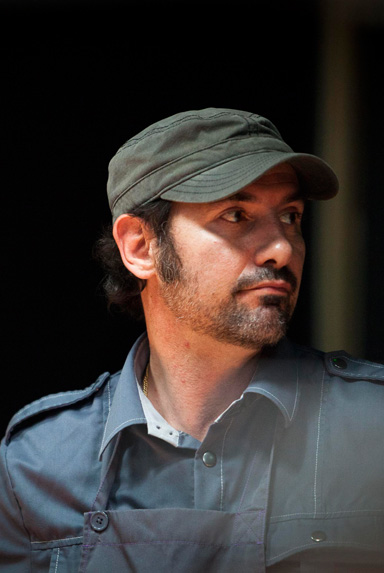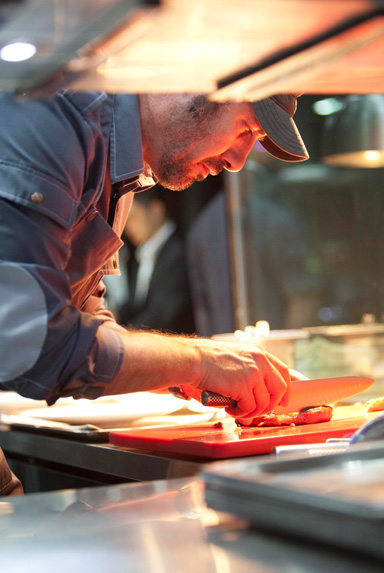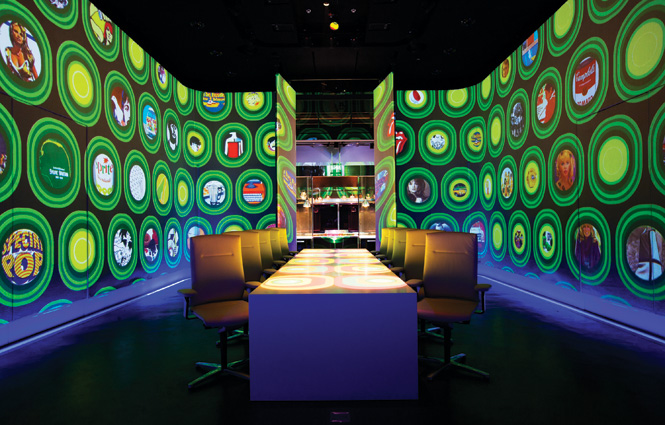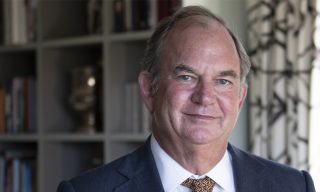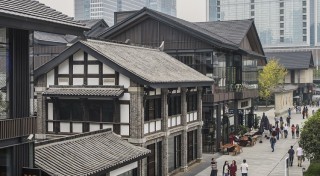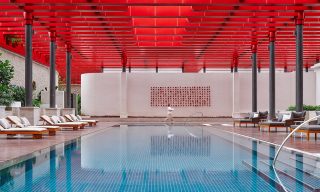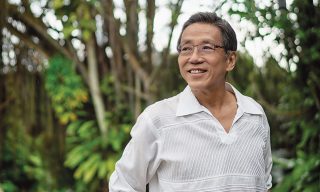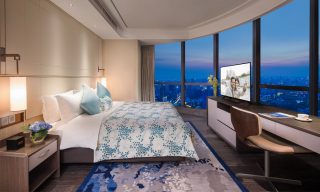A Q&A with the first recipient of Asia’s 50 Best restaurants’ Lifetime Achievement Award.
After a decade spent profiling the world’s great fine-dining establishments, the S. Pellegrino World’s 50 Best Restaurants last month released the results of its inaugural rankings for Asia—awarding its first Lifetime Achievement Award to a French-born chef with two restaurants in the top 10. Paul Pairet first came to Asia in 1992, working in cities as diverse as Jakarta and Hong Kong. A former disciple of Alain Ducasse, the 48-year-old Pairet’s star shone in Shanghai at Pudong Shangri-La before rising further with the unveiling of Mr and Mrs Bund in 2009. Last year saw the opening of his avant-garde restaurant Ultraviolet, a project that took 15 years to realise. Mr and Mrs Bund and Ultraviolet are ranked at 7 and 8 respectively on this year’s list. DestinAsian caught up with Paul Pairet to find out what’s next for one of Asia’s culinary pioneers.
How did your culinary career begin?
The Manuel des Recettes de Grand Mere Donald (an anthology of recipes penned by Donald Duck’s grandmother) followed by “La Frite de Feti” (being taught how to make the perfect French fry by a former mentor, chef Feti). Finally, my very first cooking lesson—with three carrots in three glasses of water.
When you were first starting out, to whom did you look up, and why?
Joël Robuchon for his precision and perfectionism. Jacques Maximin, Michel Trama, and Alain Senderens for their creativity, and, at a later stage, Alain Ducasse for his philosophy.
The vision for Ultraviolet was born in 1996. Now that it has come to fruition, are you taking a break or is there another project of similar ambition in the works?
There’s not much time to take a break with two restaurants to run. At this stage there may be other Ultraviolets or similar places in the pipeline and we have had a few solicitations—specifically to extend our knowledge to high end events.
At Ultraviolet you include fun and theater to what has been called a fully sensory experience. Was there any area in which you feel you had to compromise the original vision, or is the finished product exactly what you had in your mind’s eye?
There wasn’t much compromise thanks to VOL group, which has been my long-time backup. When we opened, it finally looked quite close to what I had in mind.
You’ve lived in France, Hong Kong, Sydney, Jakarta, and now Shanghai. How has your style has evolved over that time?
I developed my own essentialism—spending more time removing than adding (compensation), so that a dish is completed when there is nothing more to add and, more importantly, nothing more to remove. However, I try to keep to one idea per dish—although that’s less the case at Mr and Mrs Bund—and to have a strong reason for why I do a dish.
You’ve worked in Shanghai since 2005, what are the things you love and don’t love about the city?
I love Shanghai. I love its energy and the idea that it’s a city under construction—and that we participate in this giant act on our own small level. But, I don’t like the winter or the pollution in the city.
What are some of Shanghai’s best-kept secrets?
The little terrace of the Compass Bar at the Peninsula Hotel in the summer. The Captain YMCA bar on a rooftop…in fact hundreds of hidden places with a charm within a concrete setting—not necessarily top product.
If you could open a restaurant somewhere other than Shanghai, where would it be and why?
London, New York, Paris, Singapore, Sydney, or Vancouver—just because I love big cities. Singapore’s Raffles… just because of the beautiful colonial architecture and what it represents. But I might well end up on a beach with a French-fry van one day… preferably in Bali.
How do you see the future of molecular cooking?
Molecular cooking is a stamp, which, as with most stamps developed by the press, such as “fusion,” is a shortcut to more complex concepts. As much as “molecular” is the wrong stamp for what I do, it can be integrated within a solid food philosophy opening new possibilities—but not as a core one.
What has been the single most memorable moment of your career so far?
The one to come? Other than that, when my son came for the first time to eat in Jade on 36 at the Shangri-La in 2008. He was only five years old and asked to eat another Black Cod in the Bag… very proud.
If you could cook for anyone, anywhere in the world… what would you cook, for whom, and where would it be?
I’d cook a sole meunière for my mum in the remote and unsexy Rosny sur Seine (a small town west of Paris) because it took me a long time to understand that a mother definitely wants the best for her son—regardless of the cost versus the means. Though in truth, I might well go for a nice saucisson for myself in a Mandarin Oriental suite… Little efforts—big impact. Food is about sharing with friends, but when it is too good, selfishness is not a sin.

